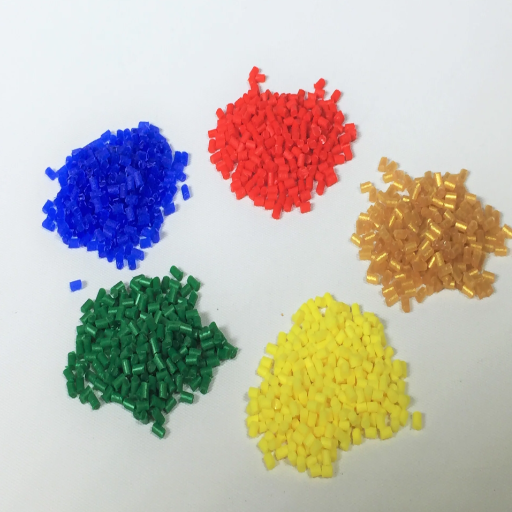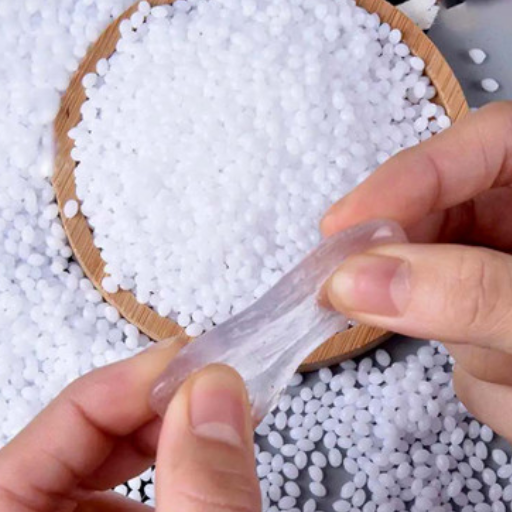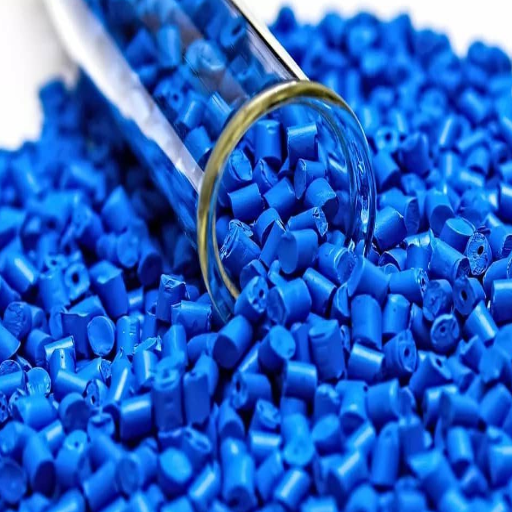Plastic pellet pollution, often referred to as nurdle contamination, is a growing environmental concern that impacts marine ecosystems, wildlife, and even human health. These tiny pellets, the raw material used in plastic manufacturing, often escape into the environment during production, transportation, or handling, becoming a pervasive pollutant in our oceans. Due to their small size, nurdles are easily mistaken for food by marine animals, leading to harmful ingestion and broader ecological consequences.
This blog post will explore the origins and environmental impact of nurdle pollution, shedding light on how these seemingly insignificant pellets can cause extensive damage to aquatic ecosystems. We will examine the pathways through which nurdles enter the environment, their ecological effects, and the current challenges in mitigating this form of pollution. Additionally, we’ll discuss the global efforts and innovative solutions being developed to curb nurdle contamination.
What are plastic pellets and why are they a concern?
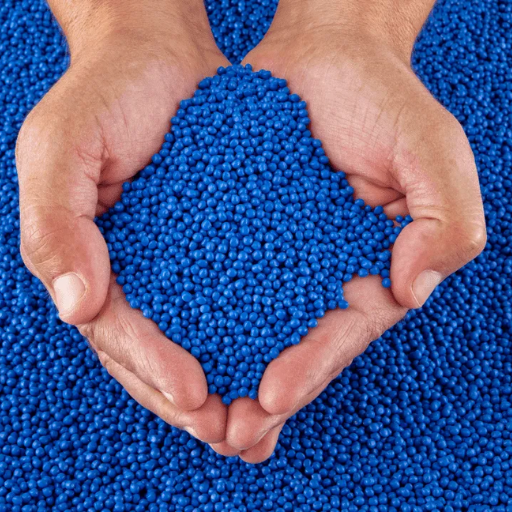
Plastic pellets, also known as nurdles, are small, lentil-sized pieces of raw plastic used as the primary material in the production of plastic goods. While essential to manufacturing, these pellets are a significant environmental concern due to their widespread leakage into marine and terrestrial ecosystems during transportation and handling. Once released, they are easily mistaken for food by wildlife, posing severe threats to animal health and food chains. Additionally, plastic pellets absorb harmful pollutants from the environment, further amplifying their ecological and human health risks. Their pervasive presence highlights the urgent need for stringent measures to mitigate and prevent their pollution.
Understanding plastic resin pellets and their role in manufacturing
Plastic resin pellets, often referred to as nurdles, are the raw material used in the production of a vast range of plastic products. These small, bead-like materials are created through polymerization or polycondensation processes, which solidify synthetic resins into easily transportable and moldable units. Commonly composed of polymers such as polyethylene, polypropylene, and polystyrene, plastic resin pellets serve as the building blocks for items like packaging materials, automotive parts, electronics, and household goods.
Their widespread use in manufacturing stems from their versatility, lightweight nature, and cost-effective production. Manufacturers melt and mold these pellets into desired shapes, enabling the creation of products with specific mechanical and thermal properties. However, despite their utility, plastic resin pellets pose significant environmental challenges due to accidental spills during transportation and processing, emphasizing the need for better handling and containment practices in the supply chain.
The environmental impact of nurdles on marine ecosystems
Nurdles, the tiny pellets used in the manufacture of plastics, represent a serious hazard to the marine ecosystem by contributing to pollution. As nurdles are transported or processed, they leak into rivers, seas, and shorelines. Within the oceanic ecosystem, nurdles are misidentified as nutrients by creatures such as fish, birds, and other wildlife, which leads to consumption that can cause stunting growth, malnourishment, or even death. Furthermore, porous nurdles absorb toxic substances such as pesticides and heavy metals. The further up the food chain these dire chemicals are, the more dangerous they are to marine animals and even to humans who consume seafood. Cleanup operations are extremely difficult due to their small size and ability to float, underscoring the immediate need for better legislative control of these materials and improved containment and removal techniques to lessen their environmental damage.
How plastic pellets become a source of microplastic pollution
Plastic pellets, also known as nurdles, are a primary source of microplastic pollution due to their widespread use in manufacturing and their vulnerability to spillage. These tiny pre-production raw materials are used to create plastic products but often escape into the environment during transport, storage, or production processes. Once in the environment, they easily disperse due to their lightweight nature, accumulating in waterways, oceans, and coastal areas. Over time, these pellets degrade into smaller fragments due to UV exposure and physical abrasion, becoming microplastics. Their pervasive presence in marine ecosystems not only contaminates habitats but also attracts harmful pollutants, such as pesticides and heavy metals, exacerbating their environmental and health impacts. Preventative measures, including stricter regulations on pellet handling, improved transportation practices, and innovative containment strategies, are essential to address this growing issue.
How do plastic pellets end up in our waterways and oceans?
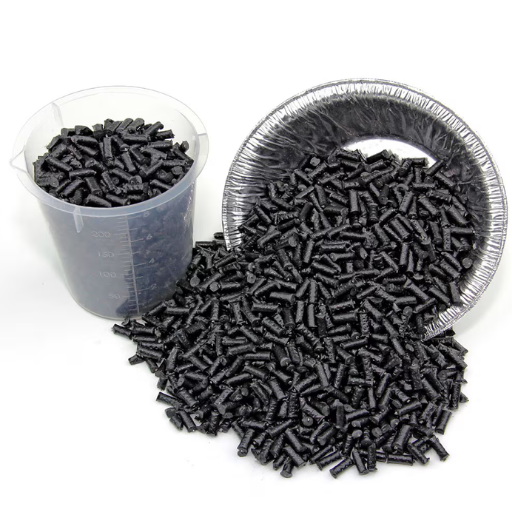
Plastic pellets, also known as nurdles, often enter waterways and oceans through spills during manufacturing, transportation, and storage processes. Inefficient handling or accidental release during transit can lead to these lightweight pellets being carried into storm drains, rivers, and ultimately the sea. Additionally, poor waste management and inadequate containment systems at industrial sites exacerbate the issue, allowing pellets to escape into the environment where they persist and accumulate.
Common causes of plastic pellet spills during transportation
Common causes of plastic pellet spills during transport include inadequate wrapping, stowing, or securing techniques. Valuable containment methods as simple as containment bags and boxes are often punctured or torn, resulting in pellets leaking from transit shipping bags, containers, or even bulk transport vessels. Judgment lapses such as failure to properly close lids and doors to storage compartments and mishandling of the cargo while boarding and disembarking the vessel do increase the chances of spills drastically. In addition, spills can arise from accidents or other unplanned events, such as reckless driving of a third party vehicle or extreme changes in environmental temperature. Lastly, insufficient methods and policies governing the transport of pellets are also very critical factors towards the large frequency of such events, making hull losses and spills far too common along the whole supply chain.
Industrial losses and inadequate waste management practices
Industrial losses and insufficient waste management practices pose significant challenges to environmental sustainability. During production, factories often face material inefficiencies, with pellets being lost due to equipment malfunctions, mishandling, or outdated infrastructure. These losses are compounded by inadequate waste management systems that fail to properly contain or recover spilled materials. Many facilities lack robust practices for recycling or safely disposing of pellets, leading to substantial environmental leakage. Furthermore, insufficient regulatory oversight and inconsistent enforcement exacerbate the problem, allowing avoidable waste to persist within supply chains. Implementing standardized protocols, modernizing infrastructure, and promoting accountability are critical steps to address these issues effectively.
The journey of nurdles from land to sea
Nurdles, small plastic pellets widely used as raw materials in manufacturing, frequently escape into the environment during production, transport, and handling. Their path from land to sea begins with accidental spills during transfer processes, poor containment measures, or mishaps during shipping. With their lightweight and durable properties, nurdles make their way into storm drains, rivers, and waterways, eventually reaching the ocean. Once in the marine environment, they persist due to their resistance to degradation, contributing to widespread pollution. These pellets not only harm aquatic wildlife that mistake them for food but also absorb toxic chemicals, exacerbating their environmental threat. Addressing their leakage requires improved containment practices, enhanced regulations, and industry-wide commitment to sustainable handling.
What are the consequences of plastic pellet pollution?
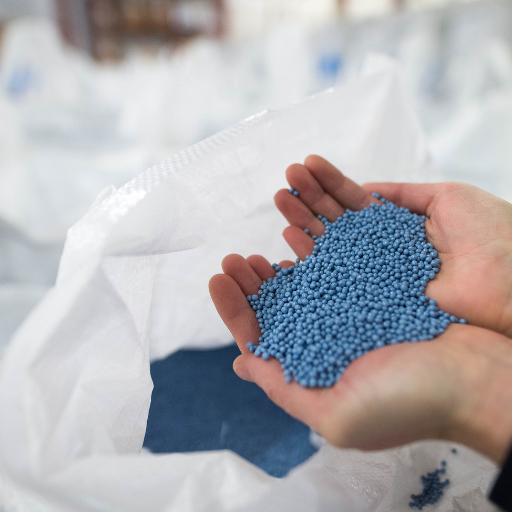
The marine ecosystem as well as humans face terrible impacts from plastic pellet pollution. Animals like fish and seagulls consume these pellets, thinking they are nutritious, which results in internal damage, blockage, and stunted growth. Also, plastic pellets accumulate fatal toxins that, due to the food chain, threaten the health of people who eat contaminated sea food. The biodiversity for different life-forms is also negatively impacted because plastic pellets disrupt the clean and safe environment that is maintained.
Effects on marine life and ecosystem health
The effects of plastic pollution, particularly from plastic pellets, on marine life and ecosystems are both devastating and far-reaching. Marine creatures often mistake these pellets for food, resulting in ingestion that can lead to severe health issues such as internal injuries, intestinal blockages, and starvation. Furthermore, as plastic pellets travel through the water, they absorb and transport toxic chemicals, which bioaccumulate in marine organisms and move up the food chain, ultimately endangering human health through seafood consumption. Habitat disruption is another critical impact, as the accumulation of plastics in coral reefs, seagrass beds, and other key marine habitats damages the structural integrity and viability of these ecosystems. Over time, this widespread pollution reduces biodiversity, alters species populations, and disrupts fragile ecosystem balances, jeopardizing the health and sustainability of oceanic environments worldwide.
Implications for human health and food safety
The presence of microplastics in marine environments has direct and concerning implications for human health and food safety. Microplastics, consumed by marine species, accumulate in the food chain and eventually reach humans through seafood consumption. Studies indicate that these plastic particles pose risks of chemical exposure, as they can leach harmful substances such as bisphenols and phthalates. Additionally, microplastics may carry other environmental pollutants like heavy metals and persistent organic pollutants (POPs), further magnifying health risks. Long-term exposure to these contaminants is associated with issues such as hormonal disruption, inflammation, and potential damage to the immune and digestive systems. Addressing this growing threat necessitates urgent action to reduce plastic pollution at its source while ensuring safer food production and consumption practices.
Economic impacts on coastal communities and industries
Plastic pollution poses significant economic challenges for coastal communities and industries reliant on the health of marine ecosystems. Tourism-dependent regions suffer as polluted beaches deter visitors, leading to reduced revenue for local businesses and governments. Industries such as fisheries and aquaculture face declining productivity due to the impacts of plastics on marine life, resulting in disrupted fish populations, entangled equipment, and diminished seafood quality. The cost of cleanup efforts further exacerbates the financial burden, with communities and governments incurring substantial expenses to remove debris and restore coastal areas. Additionally, shipping and maritime transport industries encounter risks from plastic entanglements, causing damage to vessels and delays. Addressing these economic consequences requires a collaborative approach to reduce plastic waste, implement sustainable practices, and invest in innovative solutions that protect both the environment and economic livelihoods.
How can we prevent plastic pellet spills and reduce pollution?
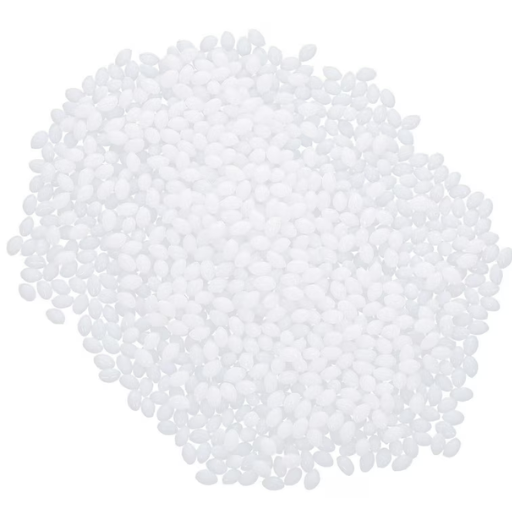
An effective policy to avoid spilling plastic pellets while simultaneously cutting pollution must focus on prevention, management, and education. For example, increasing regulations and best practices concerning the handling, transport, and storage of plastic pellet processes could decrease spills. Industries can also spend funds on better containment systems, sealed transfer systems or spill barriers. Moreover, regular monitoring and clean-up activities must accepted and addressed to deal with spills and ensure minimal damage to the environment. Furthermore, educational campaigns can sustain effort to mold employees and businesses as active stewards of reducing negative impact. In addition, such campaigns teach the general public about pollution caused by plastic pellets. Working together with governments, plastic-producing industries, and communities will help drive long-term change for all stakeholders to enjoy.
Best practices for handling and transporting plastic resin pellets
Implement Proper Containment Systems
Use sealed containers, such as reusable bulk bags, covered bins, or leak-proof packaging, to prevent spills during transportation and storage. Employ loading systems with minimal transfer points to reduce the chances of pellet leakage.
Adopt Efficient Spill Prevention Mechanisms
Install containment trays, barriers, and advanced pellet release prevention systems at production, packaging, and transport facilities. Regularly inspect and maintain equipment to ensure it operates efficiently without leakages.
Conduct Regular Training for Staff
Educate employees and contractors about pellet handling protocols and the environmental impact of spills. Provide ongoing training in safe handling practices and spill response procedures to foster accountability and efficiency.
Utilize Proper Labeling and Documentation
Clearly label containers and transport units to identify their content as plastic resin pellets. Maintain accurate documentation to ensure compliance with regulatory requirements and support responsible handling throughout the supply chain.
Adopt Best Management Practices (BMPs)
Follow industry-standard BMPs such as those outlined in the Operation Clean Sweep® (OCS) program. These include guidelines on waste reduction, spill response planning, and tracking procedures to contain and recover lost pellets effectively.
Collaborate with Transport Partners
Work closely with logistics providers to confirm their compliance with pellet transportation guidelines. Ensure carriers employ best practices for loading, unloading, and cleaning transport vehicles to prevent accidental loss.
Invest in Spill Cleanup and Recovery Efforts
Equip facilities and vehicles with spill kits for quick response to accidental releases. Develop and implement detailed cleanup protocols to mitigate environmental damage if a spill occurs.
By incorporating these best practices, companies can significantly reduce the environmental impact of plastic pellets and contribute to a more sustainable and responsible supply chain.
Implementing effective stormwater management systems
Effective stormwater management systems are essential for controlling the impact of urban runoff on the environment. To streamline implementation, focus on these key strategies:
Adopt Green Infrastructure
Utilize practices like rain gardens, permeable pavements, and green roofs, which naturally absorb and filter rainwater. These methods not only reduce runoff volume but also improve water quality by trapping pollutants.
Rainwater Harvesting
Install systems to collect and store rainwater for reuse in irrigation, landscaping, or other non-potable applications. This reduces water waste and alleviates the burden on drainage systems during heavy rains.
Proper Drainage System Design
Ensure drainage systems are designed to handle heavy rainfall by incorporating detention basins, swales, and culverts. Regular maintenance, such as clearing debris, is crucial to keep these systems functioning optimally.
Education and Community Engagement
Encourage local communities and businesses to adopt stormwater-friendly practices, such as reducing impervious surfaces or planting native vegetation, to collectively mitigate runoff issues.
By integrating these approaches, municipalities and businesses can efficiently manage stormwater, prevent flooding, and protect local waterways from potential contamination.
Industry initiatives and voluntary programs to prevent pellet loss
Plastic pellet loss poses significant environmental risks, particularly to marine ecosystems. To address this, the plastic industry has launched various initiatives and voluntary programs aimed at reducing pellet spillage during manufacturing, transportation, and handling processes.
Operation Clean Sweep (OCS)
Operation Clean Sweep is a global program developed by plastics industry trade associations to prevent resin pellet, flake, and powder loss. Participating organizations commit to implementing best practices, such as proper containment systems and employee training, to reduce spills and ensure sustainable operations.
Zero Pellet Loss Initiatives
Companies are increasingly committing to zero pellet loss goals. These initiatives involve implementing stringent controls throughout the supply chain, including innovations like leak-proof packaging, enhanced storage solutions, and improved transportation methods to minimize accidental pellet leakage.
Partnerships and Certification Programs
Industry partnerships, such as collaborations with environmental organizations, focus on monitoring and reducing pellet pollution. Certification programs hold companies accountable by providing third-party audits and certifications verifying adherence to pellet loss prevention standards.
These collective efforts not only help protect the environment but also contribute to building a more sustainable plastics supply chain. By promoting awareness and best practices, the industry is taking steps to align environmental responsibility with operational excellence.
What are the global efforts to address plastic pellet pollution?
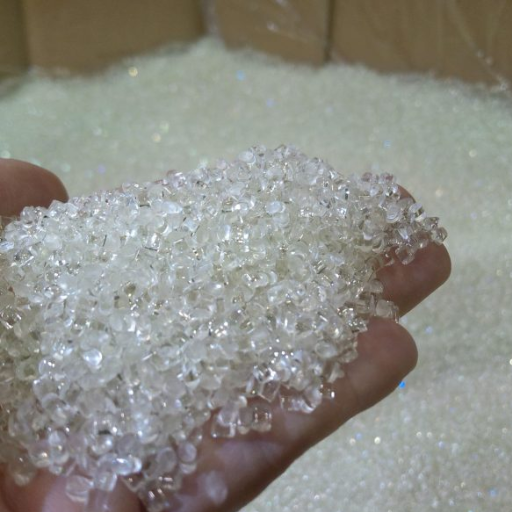
Several global initiatives aim to tackle plastic pellet pollution through collaborative efforts and stringent regulations. Programs such as Operation Clean Sweep (OCS) promote best practices for containment and handling of plastic pellets while encouraging industry-wide participation. Governments and environmental organizations across the globe are introducing policies to regulate pellet management, ensuring compliance through monitoring and penalties. Additionally, international collaborations, like those facilitated by the United Nations Environment Programme (UNEP), focus on raising awareness and supporting innovative solutions to minimize plastic waste. Together, these efforts create a unified approach toward reducing plastic pellet pollution and its environmental impact.
International agreements and the Single-Use Plastics Directive
International agreements play a significant role in addressing plastic pollution on a global scale. One critical framework is the Basel Convention, which regulates the transboundary movement of hazardous and non-hazardous wastes, including certain plastic wastes, to ensure environmentally sound management. Similarly, the Global Partnership on Marine Litter under UNEP fosters collaboration to combat marine plastic pollution through knowledge sharing and innovative solutions.
Within the European Union, the Single-Use Plastics Directive (SUP Directive) provides a robust legal framework aimed at reducing plastic waste, specifically targeting commonly littered single-use plastic items. This directive includes bans on certain plastic products, such as cutlery, plates, and straws, and sets ambitious targets to reduce plastic consumption, increase recycling rates, and promote alternatives. By integrating international cooperation with regional-focused policies, these initiatives collectively work toward a sustainable reduction in plastic pollution and its harmful effects on ecosystems.
NGO campaigns and awareness initiatives
Non-governmental organizations (NGOs) play a critical role in combating plastic pollution through campaigns and awareness programs that inspire change at both individual and systemic levels. Organizations such as Greenpeace, Ocean Conservancy, and Plastic Free Foundation lead impactful initiatives that focus on raising public consciousness, influencing policymakers, and providing actionable solutions. These campaigns include educational workshops, clean-up drives, and advocacy for corporate responsibility to reduce plastic waste. For instance, Greenpeace campaigns emphasize holding major corporations accountable for excessive plastic use, while Ocean Conservancy organizes large-scale coastal clean-ups and supports innovations in waste management. Meanwhile, the Plastic Free Foundation, known for its “Plastic Free July” movement, empowers millions globally to adopt sustainable habits. Collectively, these efforts create a ripple effect, fostering collaboration and inspiring people to minimize their plastic footprint.
Innovations in biodegradable alternatives to plastic pellets
Biodegradable plastics are on the rise as a new strategy to tackle pollution and reduce reliance on oil, with research incorporating starch, polylactic acid (PLA), and polyhydroxyalkanoates (PHA) into eco-friendly materials that will break down more readily in nature. Starch-based bioplastics, derived from plant sources such as corn and potatoes, are lightweight and economical, while PLA, a polymer derived from sugars, is an increasingly popular choice for packaging and 3D printing. PHA, produced via microbial fermentation, is incredibly biodegradable and can even break down in marine environments, presenting a viable substitute for conventional plastics.
Prominent businesses are leading the change in this arena. Novamont, for example, is working on developing alternatives with more practicality, while NatureWorks focuses on improving their performance. New innovations also reach advanced research, where scientists focus on versatility and strength using cellulose nanomaterials and other plant-derived polymers. These advancements not only help eliminate plastic waste, but also adhere to circular economy frameworks by reducing environmental impact through strategically designed waste systems. There is still work to be done focusing on cost and production scale, but increasing market demand for eco-friendly materials is accelerating the development of effective biodegradable solutions.
How can individuals contribute to reducing plastic pellet pollution?

Individuals can play a crucial role in reducing plastic pellet pollution by adopting responsible consumption habits and supporting sustainable practices. Start by minimizing plastic use and choosing products packaged in environmentally friendly materials. Advocate for companies to prioritize spill prevention during production and transport. Participate in or support clean-up drives targeting plastic waste and microplastics in local water bodies and coastal areas. Additionally, raise awareness about the environmental impact of plastic pollution within your community to encourage collective action.
Participating in beach clean-ups and nurdle hunts
Cleanup events that focus on nurdles and other plastic particulates like Nurdles pellet cleaning are a few examples of addressing the plastic pollution problem directly. Participants help avert further pollution of the oceans and harm to marine life by collecting litter and Nurdles, which are small cylindrical fragments of plastic. Such initiatives are generally arranged by an environmental body or some other local group, but anyone can start by calling up their family and friends to form a group. Participants sort out trash into different categories and record useful data that can be used scientifically, so they can change decision-making in the future. Apart from helping protect Mother Nature, these activities also cultivate responsible and civic-minded citizens in regard to the problem of plastic pollution.
Supporting businesses with responsible plastic management practices
To lessen the impact of businesses on the environment, responsible plastic management practices should be promoted. One of the many strategies a company can take is switching to compostable or biodegradable packing materials. Conducting effective waste audits enables businesses to improve their recycling processes as well as reduce the use of plastic, which helps streamline processes. Working with suppliers to buy pre-consumed recycled materials or reusable ones helps encourage a circular economy and minimizes the use of virgin plastic. Enhancing transparency by making commitments towards sustainability through public pledges, endorsements, and sustainability certifications further aids in building trust.
Engagement in or support of programs like EPR, which advocates for proactive involvement in the management of plastic products people use, can also aid businesses directly. Single-use plastic and reusable products dependence will be changed when these advertised educational plans are applied along with world branding. Altering these policies empowers consumers while also aiding the environment, therefore aiding businesses in gaining the support of eco-friendly consumers. Reducing environmental harm while appealing to eco-friendly consumers who are concerned with geared markets is vital in a world that is focusing more towards sustainability.
Advocating for stronger regulations on plastic pellet handling
Implementing stricter regulations on plastic pellet handling is essential to preventing their leakage into the environment, where they contribute significantly to microplastic pollution. Effective measures include mandating industry compliance with best practices such as Operation Clean Sweep (OCS), a voluntary initiative aimed at eliminating pellet, flake, and powder loss during production and transport. However, voluntary efforts alone often fall short due to inconsistent adoption, highlighting the need for enforceable laws that establish clear penalties for negligence.
Governments and environmental agencies can play a pivotal role by introducing standardized guidelines for pellet containment, storage, and transportation. Such measures may include requiring secondary containment systems, regular facility inspections, and detailed reporting on pellet management. International collaboration is also vital, as the plastic supply chain often spans multiple countries. Harmonizing regulations ensures that all stakeholders adhere to the same high standards, reducing the risks of environmental contamination globally.
Strengthened legislation not only protects marine ecosystems from microplastic infiltration but also holds corporations accountable, encouraging innovation in sustainable manufacturing practices. Public awareness and advocacy are critical in driving attention to this issue, pressuring policymakers to prioritize stricter controls on pellet handling and promote a shift toward greater environmental responsibility across industries.
What is the future outlook for addressing plastic pellet contamination?
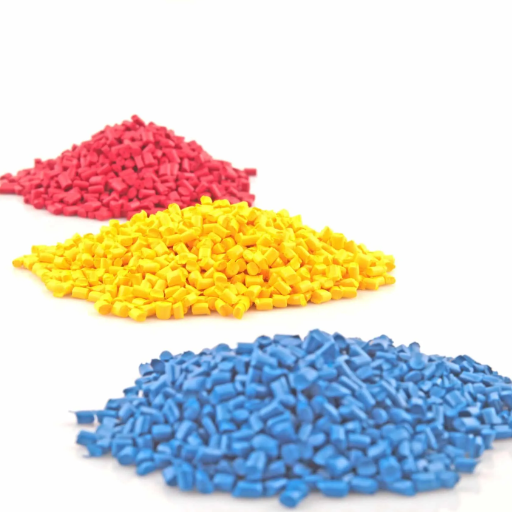
The future outlook for addressing plastic pellet contamination relies on a combination of technological advancements, policy enforcement, and global cooperation. Innovations in biodegradable materials and enhanced spill prevention technologies offer promising solutions to mitigate contamination at the source. Strict regulatory frameworks and international agreements will be essential to ensuring consistent standards and accountability within the plastic industry. Furthermore, heightened public awareness and advocacy are likely to sustain pressure on corporations and governments to fast-track environmental commitments. Together, these efforts pave the way for more sustainable practices and a significant reduction in plastic pellet pollution over time.
Emerging technologies for pellet recovery and recycling
Emerging technologies for pellet recovery and recycling are revolutionizing the fight against plastic pellet pollution. Advanced filtration systems and specialized vacuum equipment are being developed to efficiently collect pellets from both land and water environments. For instance, cutting-edge autonomous drones and robotic systems are now capable of detecting and gathering microplastics and pellets across vast areas, greatly enhancing recovery efforts. Additionally, innovations in chemical recycling methods, such as pyrolysis and depolymerization, are enabling the conversion of recovered plastic pellets into reusable raw materials, promoting a circular economy. These technologies, coupled with AI-powered monitoring systems to track spills in real time, are actively bolstering global efforts to reduce pellet contamination and improve recycling efficiency.
Potential policy changes and industry transformations
To address plastic pellet pollution, potential policy changes are focusing on stricter regulations and comprehensive global agreements. Governments worldwide are increasingly proposing mandatory pellet containment measures across supply chains, such as requiring companies to implement best management practices to prevent spills during production, transportation, and handling. Policies like extended producer responsibility (EPR) could hold manufacturers accountable for pellet leakage and recovery costs, encouraging them to adopt cleaner and more efficient processes.
On the industry side, companies are beginning to transform their operational standards to align with stricter regulations and sustainability goals. Many leading organizations are joining voluntary initiatives, such as Operation Clean Sweep, which aims to minimize pellet loss through better containment procedures. Innovations like closed-loop manufacturing systems are becoming central to industrial workflows, ensuring pellets are reused or recycled within the production cycle. These changes, coupled with increased collaboration between governments, industries, and NGOs, signal a shift toward a more sustainable, environmentally conscious future.
The role of consumer awareness in driving change
Consumer awareness plays a critical role in promoting changes that reduce plastic pellet pollution. By understanding the environmental impacts of plastic production and consumption, individuals can make informed choices that support sustainable practices. Consumers can demand greater transparency from companies regarding pellet management, encouraging businesses to adopt stricter environmental standards. Public pressure has proven effective in influencing corporate behaviors, as companies respond to customer expectations to maintain their market relevance.
Additionally, educating consumers about their purchasing power can drive a shift toward products made with recycled materials or those produced under stricter environmental guidelines. Campaigns and initiatives focused on raising awareness amplify this effect, fostering a collective effort toward sustainability. Increased awareness also spurs demand for policy changes, as informed citizens petition governments for stricter regulations and enforcement. This cycle of awareness, action, and accountability underscores the vital role of consumers in shaping a more sustainable future.
References
Frequently Asked Questions (FAQ)
Q: What are plastic pellets and why are they a concern for plastic pollution?
A: Plastic pellets, also known as nurdles, are tiny pre-production plastic pellets used as raw material in the manufacturing of plastic products. They are a concern for plastic pollution because they can easily spill and enter marine environments, contributing significantly to plastic litter.
Q: How many tonnes of plastic pellets are lost to the environment each year?
A: It is estimated that several tonnes of plastic pellets are lost to the environment each year during manufacturing and transport, contributing to the global plastic pollution problem.
Q: What materials are plastic pellets typically made from?
A: Plastic pellets are typically made from materials such as polyethylene and polypropylene, which are commonly used in the production of various plastic products.
Q: How does the loss of plastic pellets contribute to marine pollution?
A: The loss of plastic pellets contributes to marine pollution by adding to the amount of plastic litter in the oceans. These tiny plastic pellets can be ingested by marine life, causing harm and potentially entering the human food chain.
Q: What are some measures to prevent the transport of plastic pellets into the ocean?
A: Measures to prevent the transport of plastic pellets into the ocean include improved handling of plastic pellets during manufacturing and transport, implementing stricter regulations, and encouraging plastic manufacturers to adopt best practices to reduce microplastic pollution.
Q: How can industries reduce the number of plastic pellets lost to the environment?
A: Industries can reduce the number of plastic pellets lost to the environment by implementing better containment systems, improving handling procedures, and investing in technologies that minimize spillage during production and transportation.
Q: What role do governments and member states play in tackling pellet pollution?
A: Governments and member states play a crucial role in tackling pellet pollution by creating and enforcing regulations that control the handling and transport of plastic pellets, as well as promoting awareness and encouraging voluntary actions by industries.
Q: How does the “Marine Pollution Bulletin” contribute to addressing the issue of plastic pellet pollution?
A: The “Marine Pollution Bulletin” contributes by publishing research and raising awareness about the impacts of plastic pellet pollution, providing valuable data and insights that can inform policy decisions and industry practices.
Q: What impact did the 2021 reports have on global awareness of plastic pellet pollution?
A: The 2021 reports helped increase global awareness of plastic pellet pollution by highlighting the scale of the problem, its environmental impacts, and the need for urgent action to reduce the amounts of plastic entering marine ecosystems.

